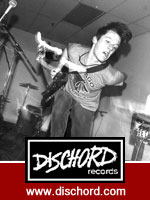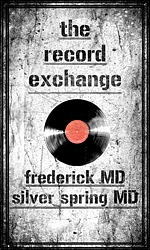For the most part, DIY show spaces often have a laissez-faire way of functioning. The “anything goes” modus operandi has its quirks and perks, but also pitfalls, and as anything goes, in time, so do the places that host the shows.
Alex Tebeleff of Paperhaus knows this all too well. When he moved to DC in 2010, he became a recurring visitor to a string of DIY spaces, sticking around long after events ended to learn more about the spaces and to connect with their hosts. One particular bond he developed was with Luke Stewart and Brandon Moses of Laughing Man. The two of them ran shows out of Red Door, a little nook in the now long-gone Gold Leaf Studios. Witnessing unique, intimate performances as well as obstacles that spaces like Red Door faced gave Tebeleff enough inspiration as well as motivation to try to host shows out of his house.
Naming the space after their band, Paperhaus turned their living room into a stage as well as a reliable, although sometimes rowdy, place for bands to crash post-performance. Each housemate carried out show duties, from collecting donations to managing possible noise problems. Somehow, over the past two years, they were able to take a residential row house and transform it into a prominent DIY venue, having high-profile acts come through, like The Luyas, Julian Lynch, and Father Figures.
But Tebeleff, as well as Eduardo Riviera, Brandon Moses, and a handful of other friends, wanted their efforts to go beyond just entertainment. They knew that house show venues were vulnerable and ephemeral, but that didn’t stop their pursuit in creating a stable space for DC’s growing music scene. “The goal is really to help establish a better touring network for DC, let touring bands realize that you can get great shows in DC, and let people in DC know that it’s fun and sustainable to put on DIY shows if you do it thoughtfully,” Tebeleff says. “DIY shows just bring people together in a very genuine way, it’s such a fulfilling thing to be a part of.”
Running The Paperhaus venue gave the band confidence to support the local music community as well as book their own national tour, which launched last spring. Two months on the road will do a lot to a band, and luckily, it molded Paperhaus into a stronger group. Upon returning, they decided to dive right in to making a full length, recording their tracks on magnetic tape with the assistance of Peter Larkin.
Recording reel-to-reel is a commitment. You have to know what you’re getting into. Like any recording process, there will be advantages as well as challenges. “Tape machines have a certain amount of tracks you can record onto. I find this benefits the recording process by making you focus on what will impact and service the music and not detract from it,” Larkin explains. “Digital recording is great for being accurate and easy to use, but sometimes you end up with heaps of layers to sort through come mix time. There are inherent problems when recording to tape, such as hiss, but much like film photography, there is a depth and charm there that you can’t get anywhere else.”
“It’s easy to make a digital recording now,” Tebeleff says. “But there’s something that is physically lost when recording digitally that you can’t get back.”
“With tape, everything takes a little bit longer, but you have time to process what you’re doing,” Larkin continues. “Digital recording is instant gratification. The best of both worlds is being able to use them together.”
As for what to angle to go for when making a record? “You can either look at recording as a perfected execution, or as something like a time capsule,” Larkin adds. “A record should provide an accurate representation of what the band or artist wants people to hear at that given time in their musical evolution.”
2013 has definitely been an evolving year for Paperhaus. Playing at the 9:30 Club this August was another accomplishment, but also a poignant milestone, as it happened to be the band’s last show with long-time member John Di Lascio. From there, the band took this transition as an opportunity to grow, and invited Sam McCormally of Ugly Purple Sweater and Tarek Mohamed of the North Country to be part of their new lineup. Mohamed, who is featured on some of the new recordings, actually played in Paperhaus years ago, and is enthusiastic to be back on board.
“For me playing an array of instruments has been exciting. I’ve always been a fan of auxiliary percussion electronics added to the mix. I’m also enjoying the energy I’m getting from the performances. I enjoy playing with the guys, who are all very talented,” Mohamed says.
“Tarek brings the average height of the band to a higher level,” Riviera shares. “Having a percussionist in mind, it challenges us creatively and changes the way of writing.”
On that note, Mohammed adds, “I would like to bring my knowledge of rhythm, time, feel, and movement to the mix. I feel my role as an additional drummer and percussionist allow me to view the music from a different perspective, one that I’m not used to.”
From here on out, a main focus for the group is on the live performance. They’re hitting the road today (9/26) for a fall tour, which includes a Daytrotter Session. You can catch them live again during their homecoming show Sunday, October 13 at the Dunes.














